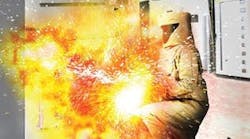OSHA began as a system for regulating employers and mandating a top-down system for improving workplace safety. OSHA regulators realized this approach alone wasn’t enough, and they requested private industry to develop a standard that mainly comes from the other direction. That standard is NFPA 70E. It provides a framework that employees can use to ensure electrical safety in the workplace.
You could approach this standard with the mindset it’s a collection of rules and procedures that you need to game to get your work done efficiently. Or you could approach this standard with the mindset that it’s a guide to what you can (and should) do to ensure an electrically safe workplace.
If you choose the latter, you’ll find implementation actually improves your overall efficiency. And not just because giving an honest effort to NFPA 70E greatly reduces the likelihood of productivity-draining injuries and fatalities.
One reason for unsafe acts in the performance of work is the work is not being performed methodically and with sufficient information to adequately understand the job before starting to do it. NFPA 70E organizes the approach to work. You could almost view the improved safety as a side benefit.
Consider, for example, the Job Briefing and Planning Checklist provided in Informative Annex I. Read through that, and you can readily see that the job walk-through needed to complete this will also solve other problems.
Consider for example, why rework is typically done (answer: poor prejob planning) and how this eliminates that cause. Or think about how many wasted trips get made mid-job for tools, PPE, equipment (e.g., a taller ladder), portable lighting, test equipment, and drawings that “nobody thought of” prior to starting the work. How many times have you had to put covers back on, go get these items, then remove the covers again?




